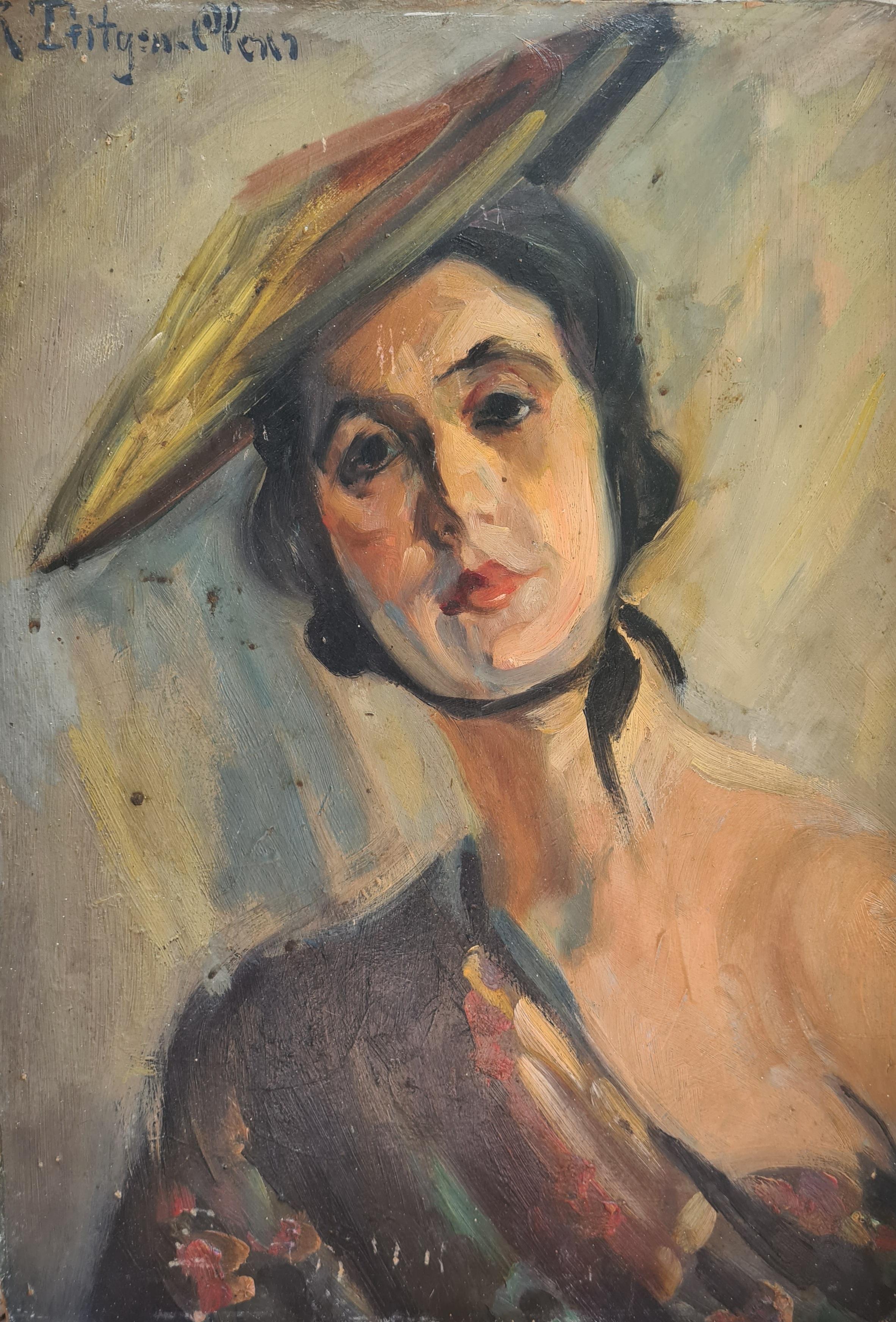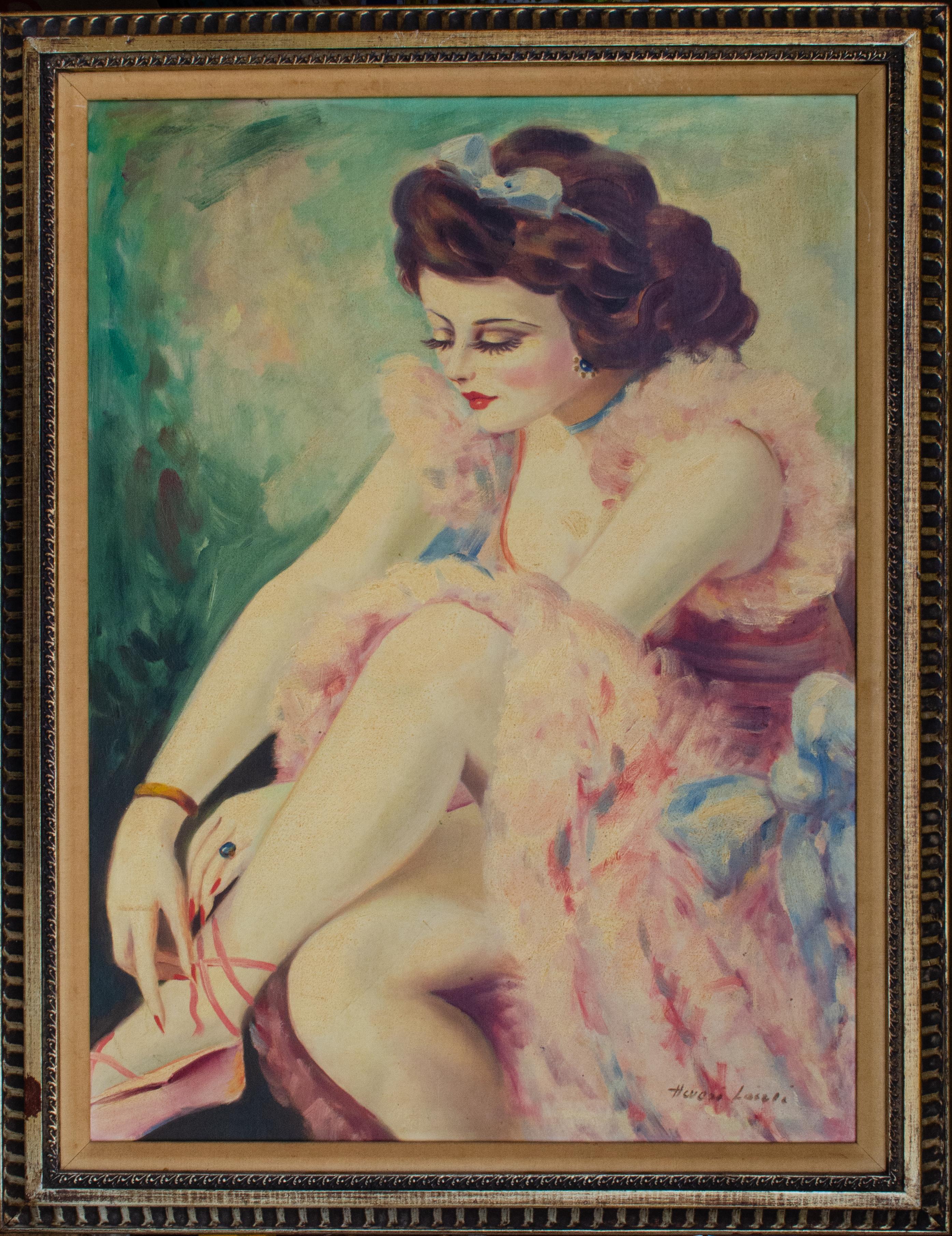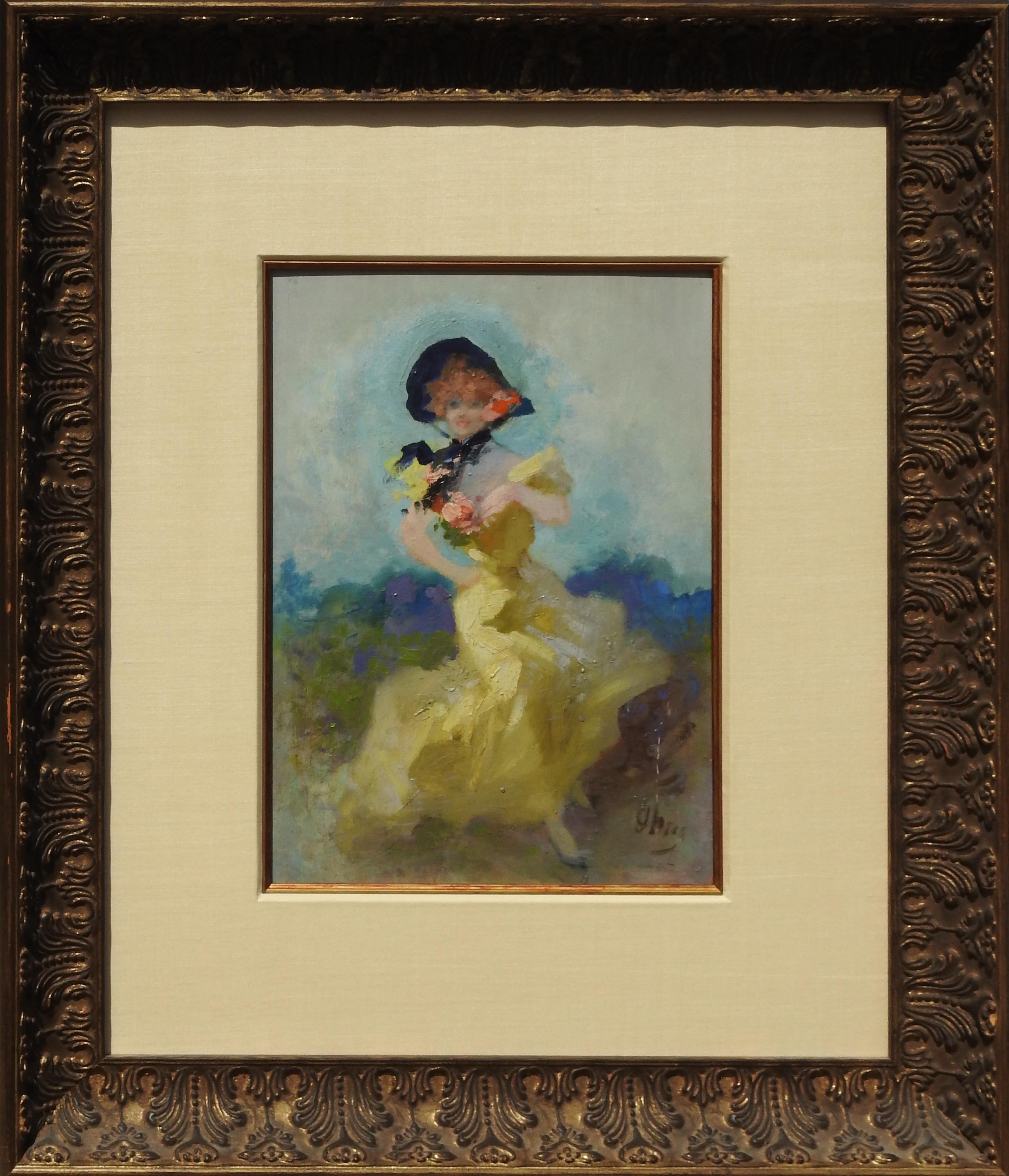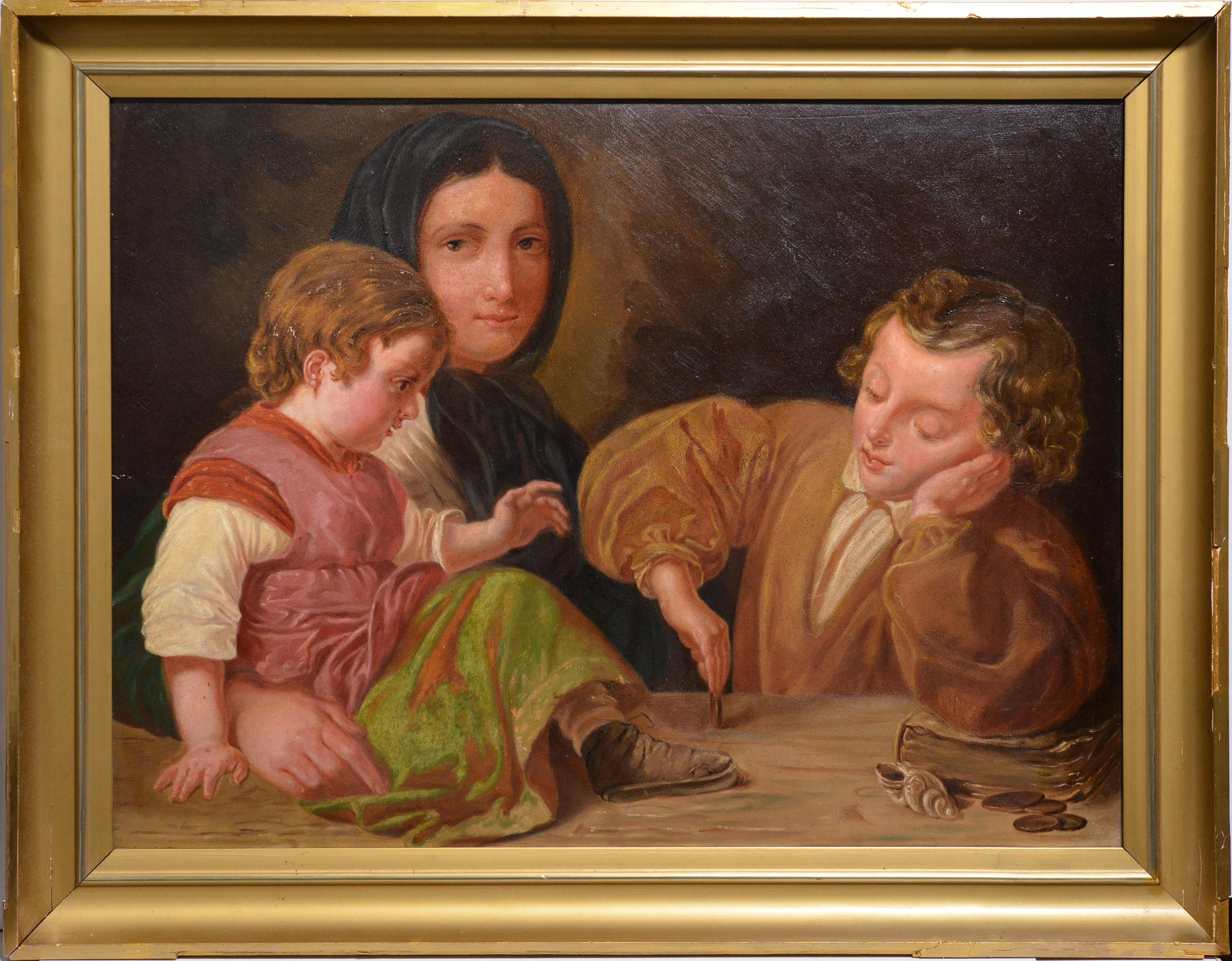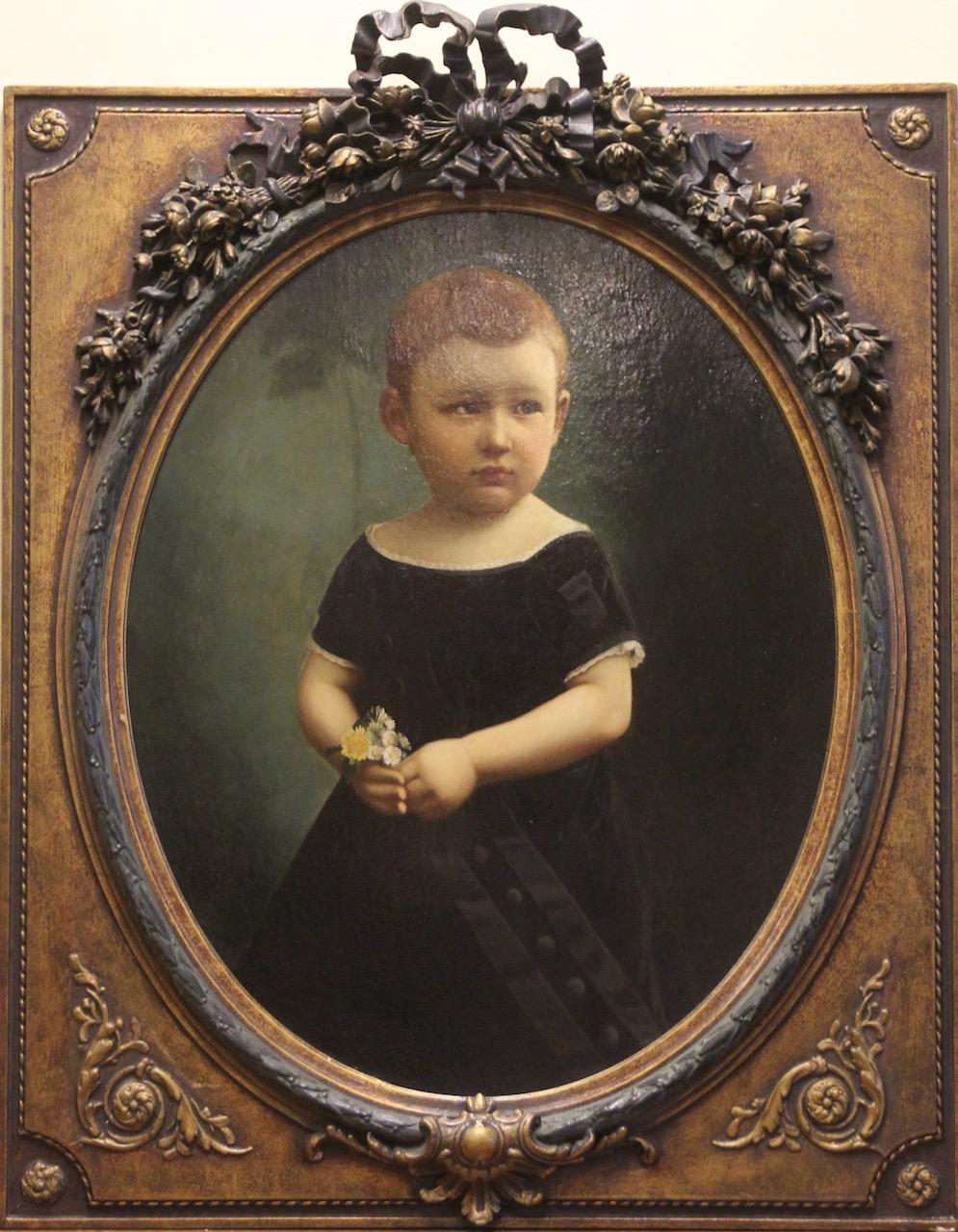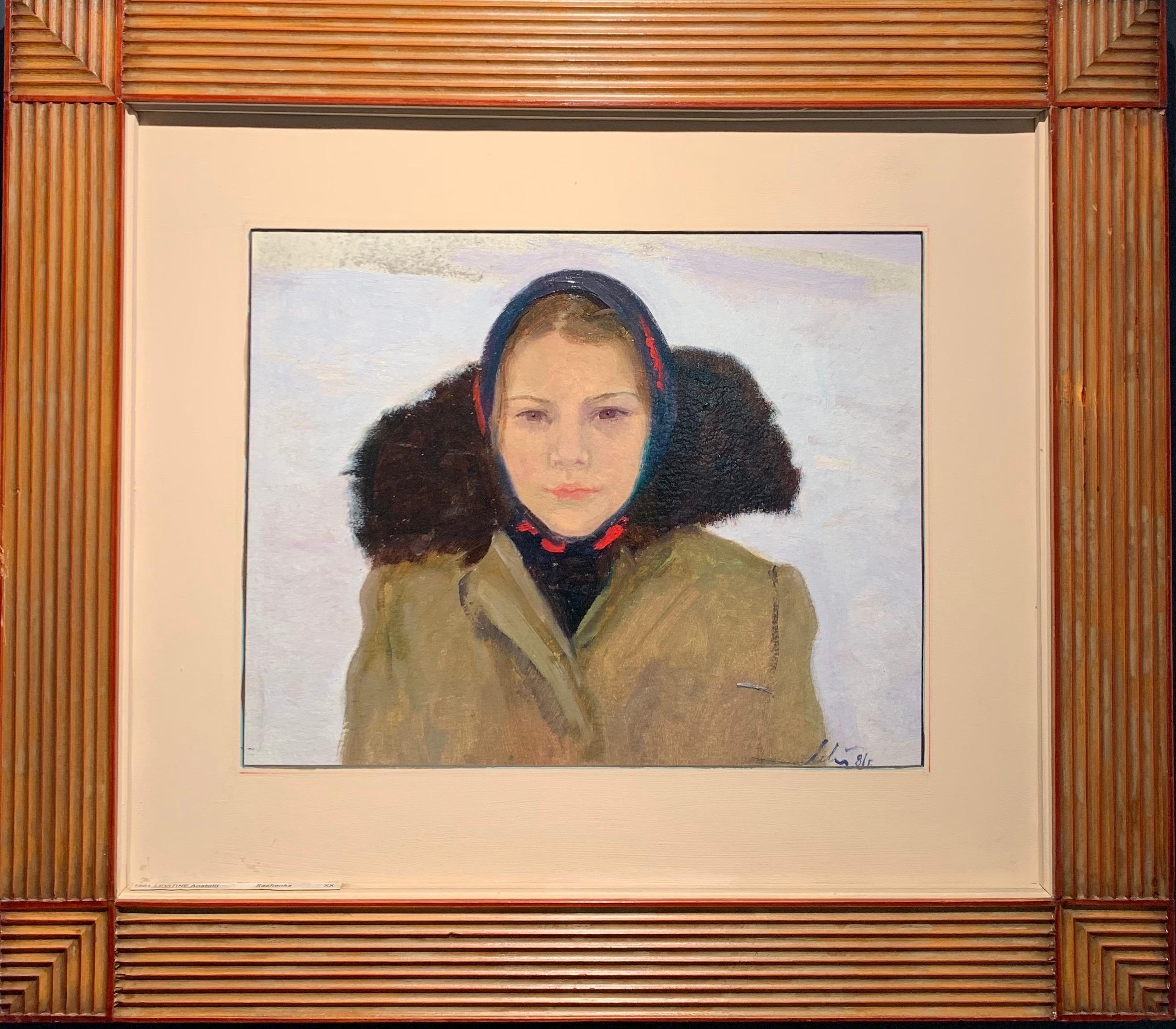Items Similar to Best of Europe:The Roman Girl Sensitive Portrait of a Young Woman Italy
Video Loading
Want more images or videos?
Request additional images or videos from the seller
1 of 12
Hermann HirschBest of Europe:The Roman Girl Sensitive Portrait of a Young Woman Italy1905
1905
About the Item
Born into difficult times, the life of German Jewish artist Hermann Hirsch was not filled with peace or abundance. However, I believe at least while he was painting this "Roman Girl" he was relaxed and at ease. It is such a serene image: there is quiet, thoughtful joy in her face.
Hermann Hirsch's artistic career began with an apprenticeship in Düsseldorf with Richard Brend'amour, a wood sculptor and engraver. From 1881 to 1885, he was a student at the Prussian Academy of Arts in Berlin. During that time, he obtained a membership of the Berlin Artists' Association, which he maintained until 1914.
He attended the Düsseldorf art academy for one semester in 1886, but was forced to leave before completing his studies, due to lack of resources"
He was a regular participant in the important Berliner Kunstausstellung (Berlin Art Exhibition) from 1893 to 1914, but his works received little public recognition. He travelled widely, visiting visiting Switzerland, Greece and Capri, with prolonged sojourns in Rome, where he became a member of the Union of German Artists. It was during this time that the painting presented here was created, in 1905.
Hirsch managed to establish a name for himself in the German art world, but the advent of Nazi rule changed everything. By 1933, the situation turned increasingly dire for Hirsch. He was one of 26 Jews in a town of only 670 people. His friends stopped associating with him and hostility towards Jews became commonplace. His niece Sabine related, “Young Nazi bullies surrounded [his] white painted house, threw stones at it, and insulted my uncle with Jewish slurs.” Hirsch’s sisters, nieces, and nephews—who used to frequent his house in the summers—emigrated to South Africa, Italy, and Britain, leaving him feeling further isolated.
In the following months, he left his house in Bremke and moved in with a Jewish family in Göttingen. He lived there only a brief time before the oppressiveness of his situation overtook him. He committed suicide and died on March 1, 1934. Dr. Wilhelm Lange wrote in the Göttinger Zeitung “A nice, honest, and pure human spirit passed with him – he broke due to the harshness on his dignity.”
I am grateful to the Virginia Holocaust Museum, which conserves works by the artist and which was the source of much of the information above. The museum of Göttingen provides information on the artist, and organised a major retrospective of Hirsch's work in the 2010s.
Note: there is a second painting on the verso of the picture. Also by Hirsch, it is unsigned and depicts a revolutionary scene.
- Creator:Hermann Hirsch (1864 - 1934, German, Jewish)
- Creation Year:1905
- Dimensions:Height: 28.75 in (73 cm)Width: 23.63 in (60 cm)Depth: 1.58 in (4 cm)
- Medium:
- Movement & Style:
- Period:
- Condition:Light wear to fragile frame.
- Gallery Location:Norwich, GB
- Reference Number:1stDibs: LU991312423232
About the Seller
5.0
Gold Seller
These expertly vetted sellers are highly rated and consistently exceed customer expectations.
1stDibs seller since 2018
73 sales on 1stDibs
Typical response time: 2 hours
- ShippingRetrieving quote...Ships From: Paris, France
- Return PolicyA return for this item may be initiated within 3 days of delivery.
More From This SellerView All
- 17th Century English Portrait of Admiral Horatio Nelson's great grandfatherLocated in Norwich, GBA fascinating portrait dating from circa 1695-1700 with wonderful provenance: it belonged to the British industrialist Leonard Pelham Lee (1903–1980) and hung in his manor house in W...Category
17th Century Old Masters Portrait Paintings
MaterialsOil, Canvas
- American WPA Jewish New York Modernist Madonna Mother and Child paintingBy Nahum TschacbasovLocated in Norwich, GBA magnificent oil on canvas by Russian American WPA artist Nahum Tschacbasov (1899-1984), dating from 1943. Depicting a Maternity scene - or possibly a m...Category
1940s American Modern Figurative Paintings
MaterialsOil, Canvas
- Auguste Renoir"s last student: portrait of Renoir"s son paintingBy Lucien BoulierLocated in Norwich, GBIf something about this painting seems familiar, it is for good reason! Dating from circa 1905-10, it is a work by Lucien Boulier (1882-1963), who was effectively Renoir's last stude...Category
Early 20th Century Impressionist Figurative Paintings
MaterialsOil, Canvas
- The Fair Skipper: boating on a mountain lake ca 1830 the Swiss Alps paintingLocated in Norwich, GBHere is an almost two hundred year old painting which is so irresistibly charming that it's crazy! You may have seen painted landscapes, portraits, genre scenes - but how many pretty...Category
1830s Romantic Figurative Paintings
MaterialsCanvas, Oil
- The blue bow: a little boy with tousled hair naturalistic portrait oil paintingLocated in Norwich, GBThis sweet little boy sits quietly like a well brought up child, but you can see in his eyes how much he likes to run and play. In this sensitive portrait painted in circa 1860 by Fé...Category
1860s Naturalistic Figurative Paintings
MaterialsCanvas, Oil
- Study of an actor, ca 1880 dramatic oil young man staring into fire 19th CenturyLocated in Norwich, GBA dramatic, one of a kind oil study. Certainly not your run of the mill 19th Century portait! Depicted is a young man, whose face is brightly lit from what is likely is an open fire....Category
1880s Academic Figurative Paintings
MaterialsCanvas, Oil
You May Also Like
- Early 20th Century Society Portrait , Grand Duchess Charlotte of LuxembourgLocated in Cotignac, FREarly 20th century oil on board society portrait by French artist Rose Teitgen-Obeurer. Signed top left. A charming and characterful portrait of a fine lady...Category
Early 20th Century Art Nouveau Portrait Paintings
MaterialsOil, Cardboard
- Art Nouveau Ballerina Painting by Mystery European ArtistLocated in Larchmont, NYMystery European Artist Untitled, c. 20th Century Oil on canvas board 31 x 22 3/4 in. Framed: 36 1/4 x 28 x 1 1/2 in. Signed lower rightCategory
20th Century Art Nouveau Figurative Paintings
MaterialsCanvas, Oil, Board
- "La Belle Epoque", Original Jules Chèret oil on board painting, 13x9 in., FigureBy Jules ChéretLocated in Dallas, TXJules Cheret (May 31, 1836 - September 23, 1932) was a French painter and lithographer who became a master of poster art. Often called the father of the modern poster. This piece is ...Category
1910s Art Nouveau Figurative Paintings
MaterialsOil, Board
- Family Portrait Mother with Children Playing Coins Framed Antique Oil PaintingLocated in Stockholm, SEFamily genre scene late 19th early 20th century. The boy, tired of posing for a portrait painter, decided to play by spinning a coin on the table, this game greatly impressed his you...Category
Early 20th Century Realist Figurative Paintings
MaterialsWood, Oil, Cardboard
- Antique Oil Painting. Child Portrait with Ornate Frame.Located in Berlin, DEDecorative, Antique Oil Painting. Child Portrait with Ornate Frame.Category
20th Century Figurative Paintings
MaterialsCardboard, Oil
- "Sashenka" Oil cm. 40 x 50 1981 Woman, Russia, snowLocated in Torino, ITWoman, Russia, snow,Portraits Levitin, Anatoly Pavlovich or Levitine, Russian, 20th century, Born 1922, in Petrograd (now St Petersburg). Painter. Figures, nudes, genre scenes. Socialist Realism...Category
1980s Realist Portrait Paintings
MaterialsOil, Cardboard
Recently Viewed
View AllMore Ways To Browse
Suicide Girls
Blindness Javier Martin
Boleslaw Von Szankowski
Calmady Children
Carlton Alfred Smith
Chanukah Menorah
Cordelia Ring
Daniel Bilmes
David Anthony Tauszky
David Pallock
Dibble Garden
Doris Rohr
Douglas Swainson
Dupont Gainsborough
Easter Bunny Bugs
Edgar Monk
Fernando Ramos Prida
Frosty The Snowman Vintage
